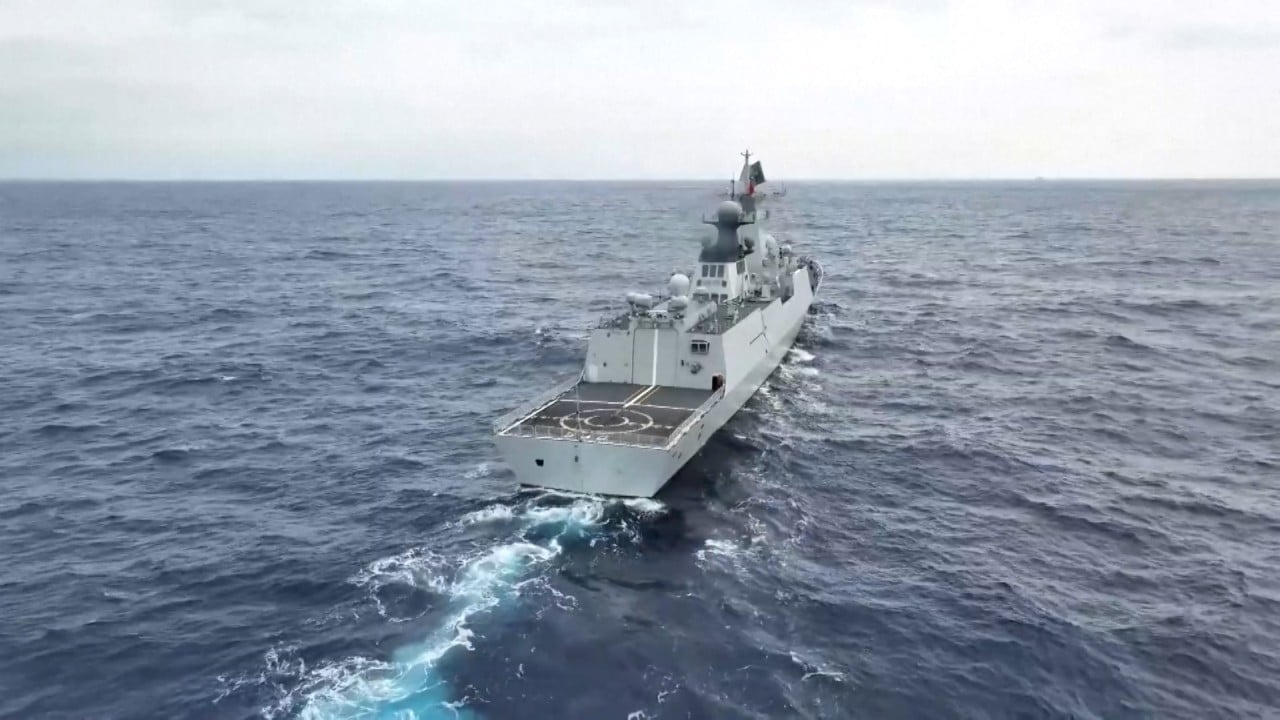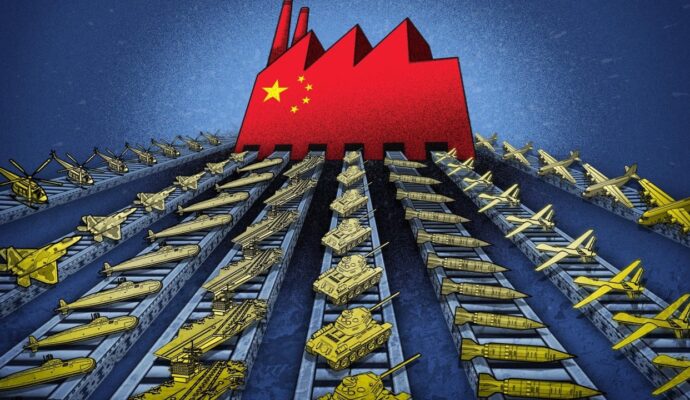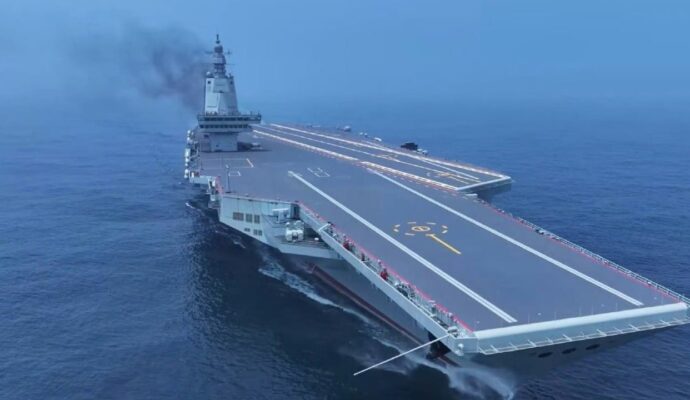It was the first time the Shandong had come so close to the island.
The warship has sailed through the Taiwan Strait several times and was reported in April to have been spotted 200 nautical miles off Oluanpi on its way to the western Pacific for training in April.
Chinese carrier sails through Taiwan Strait days after Blinken visit
Chinese carrier sails through Taiwan Strait days after Blinken visit
A total of 13 PLA warplanes, including J-16 and Su-30 fighter jets and Shaanxi KJ-500 early warning aircraft, were also detected earlier on Monday as the Shandong passed southern Taiwan, the ministry said.
Advertisement
Of the sorties, 11 crossed the de facto median line separating the island and the mainland in the Taiwan Strait and some entered the island’s southwest air defence identification zone (ADIZ), it said.
In addition, 26 PLA warplanes and 13 warships were detected around Taiwan during the 23 hours from 6am on Sunday to 5am on Monday, the ministry said, with 11 found to have breached the median line and entered Taiwan’s southwestern ADIZ.
Six J-16 fighter jets were detected to have flown along the median line from east to west and from west to east in a rare flight mode that could pose a new challenge to the island’s military.
The Taipei ministry said it had immediately “sent warplanes and warships to shadow the PLA movements and deployed missile systems as appropriate responses”.
Advertisement
The PLA has ramped up pressure on Taiwan over the past year, by first sending warplanes to Taiwan’s southwestern ADIZ, then crossing the median line and entering the southeastern ADIZ. In recent months, it has even sent drones to circle the island.
The Shandong, the PLA’s second aircraft carrier, was commissioned in 2019. Its sail-by in April came as the warship participated in mega military drills after Taiwanese President Tsai Ing-wen met US House Speaker Kevin McCarthy during a stopover in California.
Advertisement
Beijing, which views Taiwan as its territory and has not renounced the use of force to bring it under control, staged a series of unprecedented live-fire drills around Taiwan to intimidate the island shortly after Pelosi’s visit.
Advertisement
Most countries, including the United States, do not recognise Taiwan as an independent state but are opposed to any unilateral change of the cross-strait status quo by force.
Su Tzu-yun, a senior analyst at the Institute for National Defence and Security Research, a government-funded think tank in Taipei, said the sail-past by the Shandong was obviously a show of force by the PLA in response to the strait passage by US and Canadian warships on Saturday.
The US Navy’s 7th Fleet said the guided-missile destroyer USS Ralph Johnson and Canada’s HMCS Ottawa conducted a “routine” transit “through waters where high-seas freedoms of navigation and overflight apply in accordance with international law”.
Advertisement
The PLA Eastern Theatre Command, which oversees the area, later condemned the passage as an open challenge to Beijing’s rightful claim over the strait.
Su said the Shandong was more combat-ready than before as shown by its recent movements and long-range training in the western Pacific.
“[Monday’s sail-by] was also a show of force in response to the recent live-fire Super Garuda Shield drills that involved 19 countries, including the United States and Indonesia,” Su said.
It was also one way for Beijing to distract public attention from the grim economic situation at home, he added.
The Super Garuda Shield drills, launched on August 31, bring together seven participating and 12 observing nations for a two-week combined joint multi-lateral exercise.
Chieh Cheng, a security analyst at the National Policy Foundation, a Taipei think tank affiliated with the main opposition Kuomintang party, said the rare flight mode adopted by the six J-16s along the median line was intended to put further pressure on the island.
He too thought the PLA moves were “a response to the transit through the Taiwan Strait by the US destroyer and the Canadian frigate”.
Advertisement


